How Much a Week Does It Cost to Feed Bearded Dragons
The average bearded dragon price is around $35-100 for standard bearded dragons.
The bearded dragon costs doesn't start and end with buying a bearded dragon. You need to consider all the other fees related to the animal as well.
Feeding, housing, and vet bills are only a few of the things to consider. We'll take you through the relevant factors and help you discover the overall cost of keeping these animals.
You can expect to pay around $50 a month on food, and a further $40 on substrate.
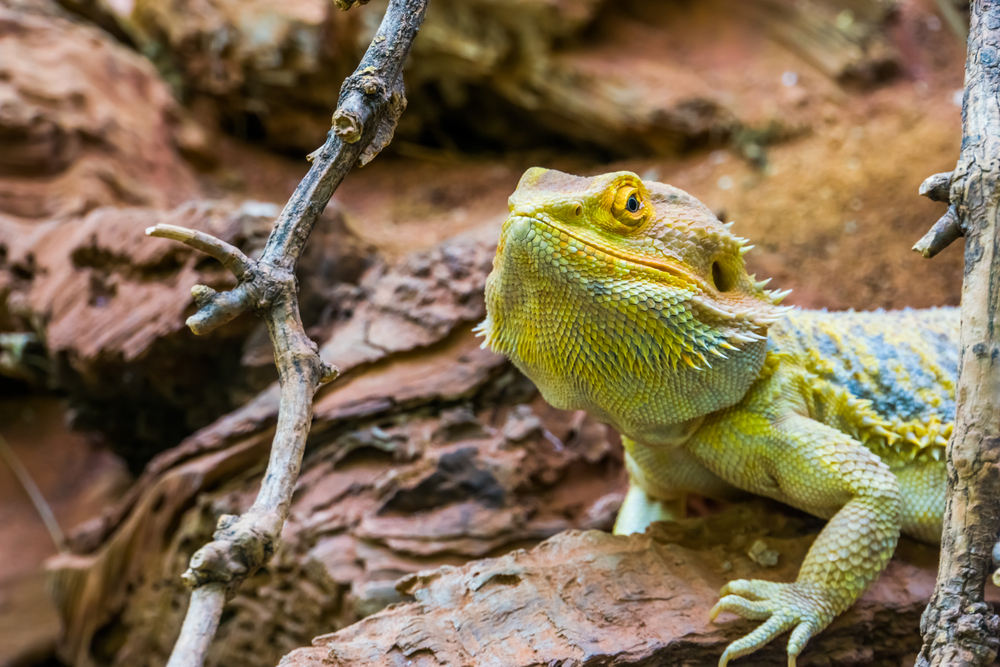
Bearded Dragon Types and Prices
While bearded dragons don't have as many morphs as some other animals, there's still a fair bit of variety.
These lizards have several different species and morphs in the pet trade. Let's take a look at some of the species and subspecies.
The species include:
- Pogona minor
- minor
- minima
- mitchelli
- Pogona barbata
- Pogona vitticeps
- Pogona nullarbor
- Pogona henrylawsoni
- Pogona microlepidota
Each species and subspecies comes from a slightly different habitat and has different needs. They also vary in size.

Pogona vitticeps is the most common pet bearded dragon and usually costs the least. Only three of the other species are generally available (though others may pop up in time).
Morphs are the other side of the equation. We'll share some of our favorite bearded dragon morphs and prices:
- Red – $50-150
- Blue – $300-400
- Snow – $200-400
- Green – $200-300
- White – $300-400
- Orange – $100-200
- Sandfire – $100-200
- Sunburst – $100-200
- Tangerine – $200-300
The rarer a morph or species is, the more expensive it's likely to be.
Note how the blue bearded dragon price is so much higher than the sunburst.
The sunburst bearded dragon price is in turn much higher than the standard beardie.
Baby Bearded Dragon Price
Depending on the morph, species, and where you buy it, you can expect a baby bearded dragon price of between $25 and $500.
Irrespective of the type of bearded dragon, babies are the cheapest option.
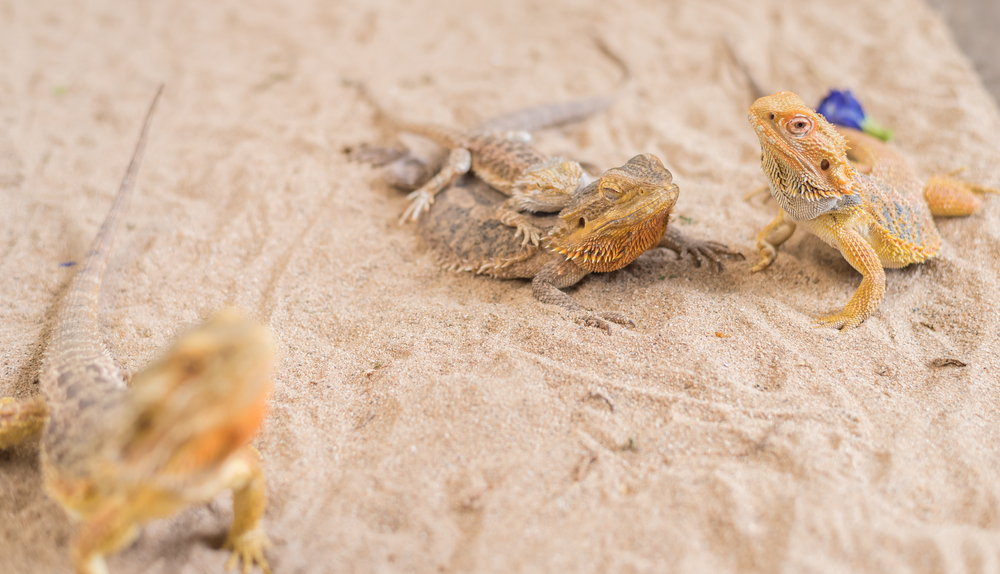
A hatchling bearded dragon can cost as little as one-third of the price of an adult. The younger the animal, the less it costs.
For example, a hatchling Sandfire only costs around $90, while adults can cost several hundred.
A Citrus hatchling costs about $70, with adults costing several times as much.
Adult Bearded Dragon Price
Depending on the morph, species, and distributor, you can expect to pay up to $2,000 for an adult bearded dragon. Standard bearded dragons cost around $150 for an adult.
The adult bearded dragon price is much higher than that of juveniles.
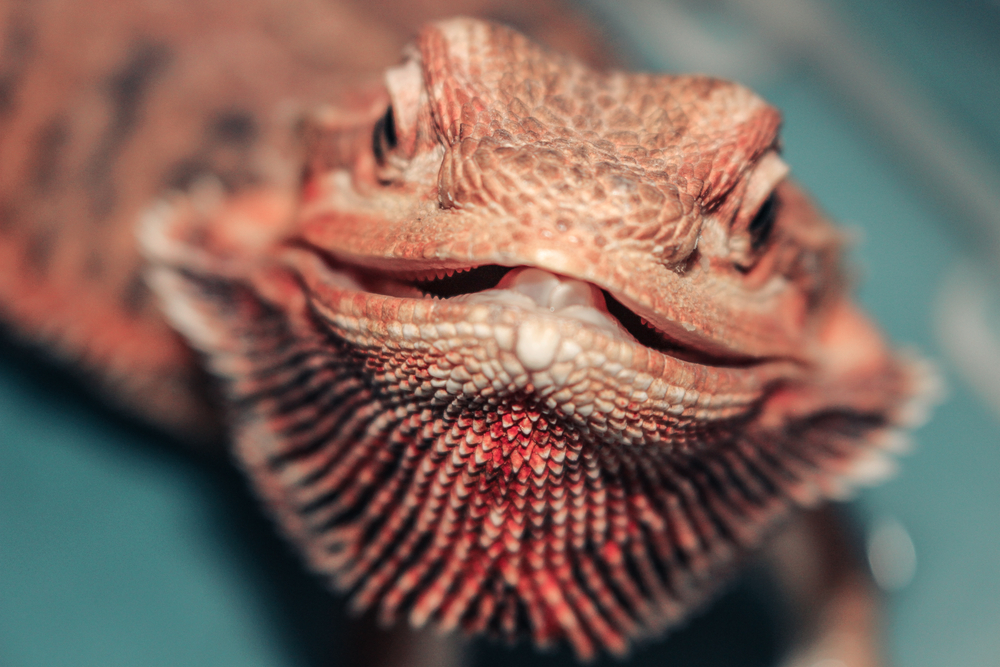
Since you have the option of breeding them soon after buying them, breeders anticipate you making a profit from them again.
It's not an unfair assumption since most pet owners prefer to raise hatchlings themselves.
And the breeder or previous owner has spent a lot to raise the bearded dragon to its current size.
The price of the bearded dragon's tank, food, substrate, and other items all contribute to the overall adult bearded dragon cost.
Bearded Dragon Owners' Cost Guide
A large part of the bearded dragon's cost lies in the care needs of the animal. We'll take you through the different costs you need to anticipate.
Cost of Housing Bearded Dragons
A 10-gallon tank, or equivalent, is more than big enough to house a hatchling beardie.

Most adult bearded dragons can live comfortably in a 20-gallon enclosure. Some keepers choose a larger bearded dragon tank, of up to 50-gallons.
There are many different housing options which include:
- Glass terrariums – One of the most readily available options that you can buy at a pet store or online.
This is often one of the most affordable standard options. You can buy these tanks at the following approximate prices.
-
- 10-gallon – $48
- 20-gallon – $100-$120
- 40-gallon – $256
- Wood enclosures – Whether you buy a wooden bearded dragon enclosure pre-made, or build one yourself, it's a beautiful option.
Since these animals don't require high humidity levels, wooden enclosures work well. Wooden enclosures absorb humidity from the air, creating a dry interior.
You can expect to pay around $50-100 total for the materials you need to build a simple wooden enclosure. This includes:
-
- Screws
- Air vents
- A pair of hinges
- A tube of silicone
- A 4′ x 8′ sheet of OSB or plywood
- A pane of glass for the front panel
It will give you a simple cage around the same size as a 20-gallon aquarium as you can see in the video below.
- Plastic containers – You can easily adapt plastic totes to act as a cage for bearded dragons.
Transparent totes make excellent reptile enclosures when equipped with appropriate lighting, heating, and ventilation. You can buy a 50-gallon tote for around $30-50.
- Acrylic terrariums – Acrylic terrariums are more expensive than most of the options on this list.
It's generally thicker than glass, but also much more prone to scratching.
While it scratches easily, glass is much more fragile and acrylic is less likely to snap or crack. You can expect the following prices for acrylic enclosures:
-
- 10-gallon – $125
- 20-gallon – $182
- 50-gallon – $350
Bearded Dragon Food Price
In short, you can expect a bearded dragon food price of around $30-$50 per month.
One major bearded dragon cost relates to feeding. Bearded dragons eat quite a lot. If you buy all the dragon's food, live foods in particular can become expensive.
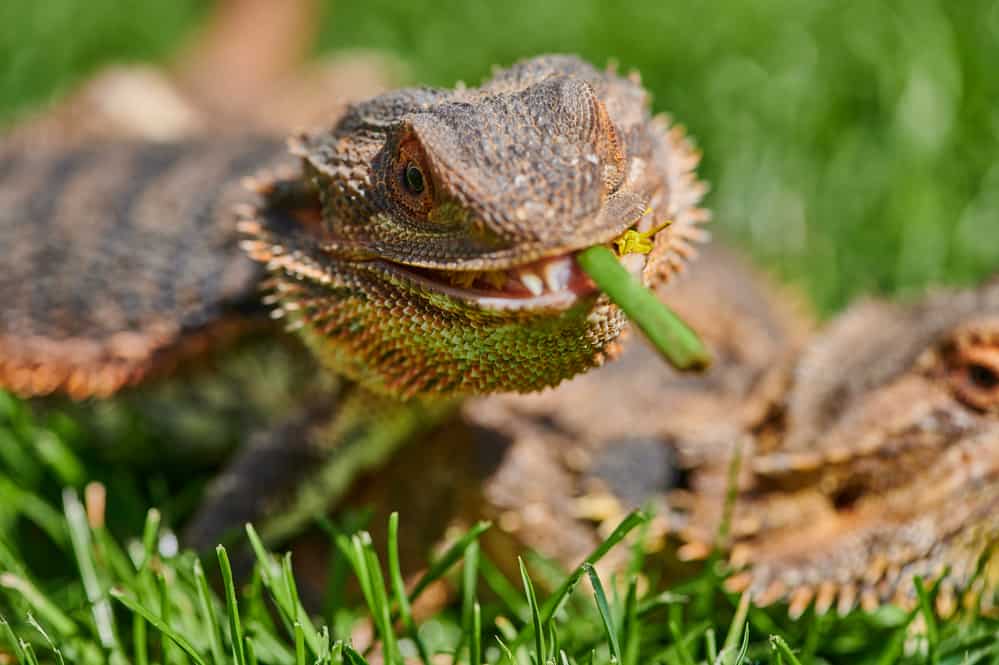
The bearded dragon diet consists of three parts:
- Fruit – 10-15%
- Live food – 20% for adults, 80% for babies
- Vegetables – 80% for adults, 20% for babies
As you can see, fruit isn't an essential part of the diet. Your bearded dragon will thrive with or without it. However, fruit can add useful minerals and nutrients to the diet plan.
Currently, fruit in the United States has an average price of around $0.91 per pound.
Your bearded dragon is unlikely to eat anywhere near a pound of fruit a month.
We'll say a $2 spend on fruit, since you may choose to give more expensive varieties, and you'll be buying organic.
Live foods can add another $7-10 to your monthly bearded dragon cost if you buy for every meal.
Of course, you can cut down on live food costs (and possibly supplement your income), by breeding worms and crickets.
Greens will add another $3-7 to your monthly feeding cost. You can also grow greens, or buy from farmer's markets, to help cut costs.
Finally, you need to add calcium and vitamin supplements to your bearded dragon's diet. Expect to spend an additional $15 a month for supplements.
Bearded Dragon Substrate Cost
You can expect to spend around $50 for a perpetual-use substrate, or $20 every fortnight for a more natural substrate.
Owning a bearded dragon involves a lot of cleaning. You need to spot clean the substrate daily, and deep-clean or replace the substrate every two weeks.

Of course, it all depends on the type of substrate you use.
The bearded dragon movement has seen a steady shift from more natural substrates to artificial ones that are easier to clean.
Some of the best substrate options include:
- Sand – Most owners don't suggest using sand for bearded dragons, because it may lead to impaction.
However, you can use sand for ⅔ of the enclosure, and keep the final ⅓ of the enclosure clean.
By adding a boundary, keeping the feeding area clean, and using a food bowl, you can prevent impactions.
- Newspaper – Newspaper and other paper-based are readily available at most pet stores.
Since bearded dragons have low humidity requirements, these substrates work well.
Newspaper is nearly free, but you'll have to replace it once or twice a week.
- Ceramic tiles – Some hobbyists prefer using ceramic tiles as a substrate. They're easy to wipe down when they get dirty, and you won't need to replace them.
While this option may seem expensive (around $50 for a box), one box will cover most enclosure sizes forever.
- Alfalfa pellets – Alfalfa pellets are a more natural option than the above choices, but you'll also need to change the substrate every two weeks or so.
A bag of alfalfa pellets costs around $19.
- Reptile carpet – Most pet stores use this product in their enclosures since it's cheap and easy to maintain.
It's a type of artificial grass that you place at the bottom of the enclosure.
It's relatively inexpensive (around $13 for a 27-inch sheet), and you can wash it rather than replace it.
Cost of Equipment
The required equipment constitutes a large part of the overall bearded dragon costs.
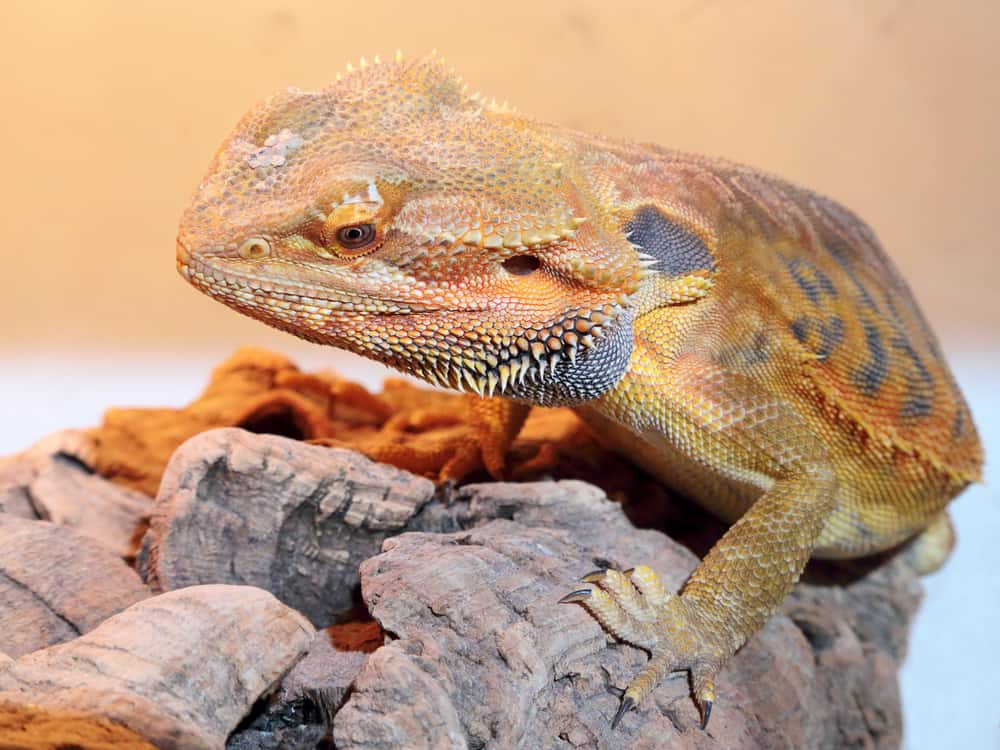
In addition to substrate, food, and housing, you'll need the following equipment:
- Heat lamps – Your bearded dragon will need heat lamps to keep them warm during the day.
- Hide Boxes – Bearded dragons need at least two hides to stay healthy.
We suggest one hide on the cool side of the enclosure, one on the warm end, and a humid hide.
- Thermostat – A thermostat helps to keep the heating pad or ceramic heat emitter in range without your intervention.
- Food and water bowls – If you want to keep your bearded dragon's enclosure clean, and the dragon healthy, then you need to use a food bowl.
Water bowls are an obvious necessity.
- Full-spectrum light bulbs – Bearded dragons need full-spectrum light bulbs to keep them healthy.
You can equip your Basking lamps (heat lamps) with full-spectrum UVA and UVB heat bulbs, instead of using multiple lamp fittings.
- Thermometers and hygrometers – To monitor the enclosure's climate, you need at least two thermometers and one hygrometer.
We recommend using thermo-hygrometer combos.
- Heating Pads or ceramic emitters – Since bearded dragons need a day and night cycle, you can't use heat lamps to heat their enclosures at night.
In the evenings, you need a ceramic heat emitter or heating pad.
If you're using entry-level equipment, you can expect to pay around $165 for the necessary equipment. We'll give you a detailed breakdown later on.
Bearded Dragon Vet Fees
If no unusual medical problems occur, you can expect annual costs of around $75-100 for veterinary advice.
While bearded dragons aren't prone to illness and disease, they sometimes need vet visits to stay healthy.
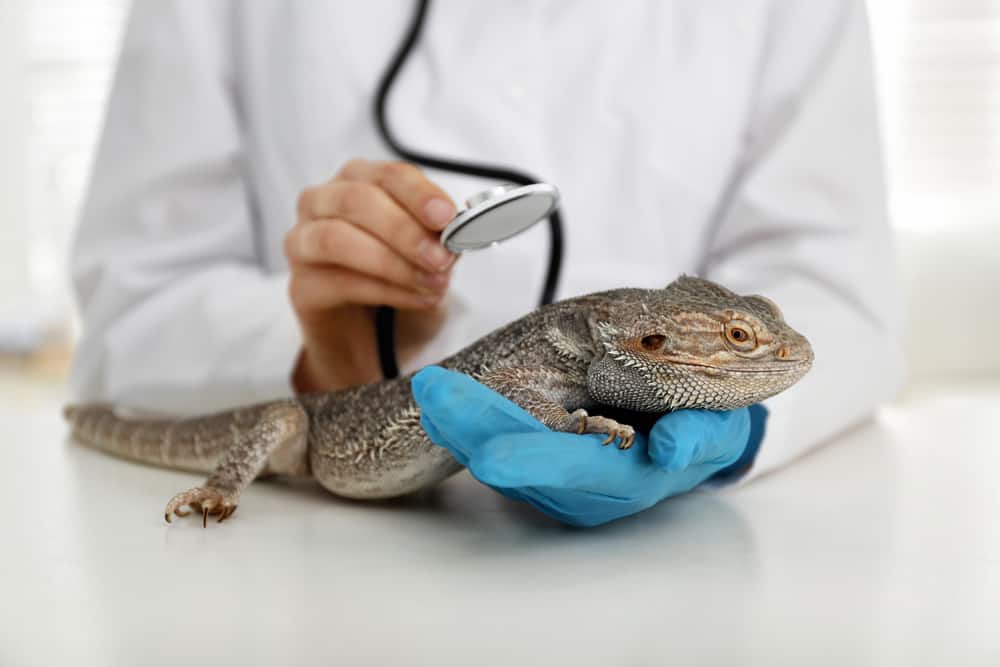
A vet visit has upfront costs of $25-100 for a basic check-up. If the initial vet visit leads to extra tests or medications, that could add anything from 50 to several hundred dollars.
Your bearded dragon needs to visit the vet annually for a general checkup, and a parasite test.
Overall Bearded Dragon Cost of Living
The average overall cost for buying a bearded dragon, and caring for it, over one year is $915.
We've brought together all of the startup and ongoing costs to help you see how much a bearded dragon will cost you.
We'll assume that you're buying a standard bearded dragon at a reptile show or pet store.
- Vet Fees – $100 a year
- Startup Costs – $165
- UV lights – $30
- Thermostat – $19
- Light Fixture– $30
- Water and Food Bowl – $10
- Substrate (Reptile Carpet) – $14
- Glass Enclosure (10-gallon) – $48
- Heating Pad or Ceramic Emitter – $18 or $14
- Ongoing Costs – $50 per month ($600 per year)
- Food – $35 per month
- Calcium and vitamins (powder form) – $15 per month
- Bearded Dragon Price – $50
If you do everything as affordably as possible, you can expect to pay an initial fee of around $215.
If you decide that you'd like a specific bearded dragon morph, a large acrylic enclosure, or other premium products, that number can increase significantly.
Let's change only the tank type, and assume you're buying a tangerine morph bearded dragon. That changes the prices to:
- Tangerine Morph Hatchling – $250
- Acrylic Enclosure (10-gallon) – $193
Assuming you use all the products we mentioned earlier and change just those two things, it adds $345 to the startup cost.
The short version is, you can pay $215 to begin with, or up to $560. If you choose a truly rare morph, this price can easily rocket to $1,000 or more.
The same is true of food, substrate, and every other element.
You can decrease the costs by being thrifty and raising live insects like mealworms and dubia roaches. You can also start a small vegetable patch and grow pesticide-free veggies.
If convenience is your main concern, then you might pay more overall.
Things to Consider Before Buying a Bearded Dragon
There are many things to consider before buying your new bearded dragon. We've made a list of tips to help you weigh up the costs.
Location Matters
Where you buy a bearded dragon has a large effect on how much the animal costs.
A local pet store will charge much less than an established, and well-known, breeder.
However, you can't be sure that the bearded dragon you buy at the local pet store or supermarket is a quality animal.
Local breeders trying to make a break into the market may be even cheaper, but carry a similar risk to pet store animals.
Size Matters
The age and size of the bearded dragon affect the price significantly. Baby bearded dragons cost much less than adults.
It's also easier to raise a bearded dragon baby to know you.
Variety Matters
Your regional pet store or breeder may stock multiple species, colors, and varieties of bearded dragons.
The wild-type bearded dragons are the cheapest, and fancier varieties are more expensive.
Bearded Dragons Don't Need Palaces
Many bearded dragon owners make the mistake of buying massive glass or acrylic enclosures.
A bearded dragon doesn't truly need the reptile equivalent of a palace. Large plastic totes make good homes with some adaptation.
You can also buy affordable wooden enclosures.
Buying Live Food Is Expensive
Many bearded dragon keepers make the mistake of trying to buy all the live foods that their animals need.
Breeding foods like mealworms, superworms, and crickets at home is much cheaper. It's also not difficult, and you can add options like silkworms for a seasonal treat.
Where to Buy a Bearded Dragon
As we mentioned earlier, you can buy your bearded dragon in many different places.
Some of the most common places to buy bearded dragons include:
- Repticon – A reptile convention (Repticon) or expo is one of the best ways to find high-quality bearded dragons.
These forums host breeders from around the country. All of the vendors go through a screening process to ensure that only the best breeders can display.
Repticons may not be the cheapest place to buy a bearded dragon, but they're worth it.
- Supermarkets – Supermarkets are responsible for countless bearded dragon sales. People go in for bread and milk and leave with that adorable little lizard.
While supermarkets may sell bearded dragons at ridiculously cheap prices, you have no idea who bred the lizard and if they bred responsibly.
It's also rare for supermarket attendants to know much about caring for bearded dragons.
They may do their best, but a lack of experience can have unpleasant results for the lizards.
- Local pet stores – Local pet stores also sell myriads of bearded dragons every year.
Except in the case of some specialist exotic pet stores, these stores are often more geared towards cuddly animals and fish.
As with supermarkets, many pet stores can't give background information about the animal.
Only purchase from a pet store if they can tell you about the breeder and you consider the store trustworthy.
Pet stores often sell bearded dragons cheap, but that doesn't mean they're good-quality animals.
- New/local breeders – Keepers often become enamored with bearded dragons and want to start breeding their animals.
In some cases, it's an absolute passion and the person in question will do a lot of research. In other cases, it's just an urge or someone trying to make money.
Local breeders may sell bearded dragons at low prices, but you can't trust all of them equally.
Preferably, go and see the breeder before buying, check out the setup, and ask questions. Only buy from them if they have a quality breeding operation.
- Online marketplaces – Online marketplaces offer one of the most hassle-free ways of buying bearded dragons.
The prices usually compare well to those of Repticon or established breeders.
You can trust the marketplace to screen the breeders and offer legal assistance if trouble arises.
Most online marketplaces work with courier systems to deliver the bearded dragon to your door in 48 hours or less.
- Established breeders – Many trusted and established breeders sell through their websites.
They have years of experience and produce animals of consistently high quality.
Buying direct from a trusted breeder may seem expensive, but it's worth it for the quality you get.
We hope you've enjoyed this article about the cost of buying and keeping a bearded dragon.
Don't forget to check out our other bearded dragon content, like the comprehensive care guide.
We also have an article that can help you decide if bearded dragons are the right pet for you.
What's your biggest concern about buying a bearded dragon? Let us know in the comments.
hagopianexclether.blogspot.com
Source: https://reptile.guide/bearded-dragon-price/
0 Response to "How Much a Week Does It Cost to Feed Bearded Dragons"
Post a Comment